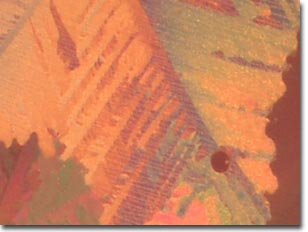Advanced Condenser Systems: Abbe Condensers
Caffeine Crystallites
The images below compare performance of the Intel Play QX3 Computer Microscope with and without the aid of an organized cone of illumination from a simple two-lens Abbe substage condenser containing an aperture diaphragm. These photomicrographs are unretouched and were captured with the QX3 interactive software.
Caffeine is a central nervous system stimulant most commonly found in the coffee we drink every morning. As a drug, caffeine is used to help restore mental alertness and to prevent drowsiness. Like most xanthines that serve as the nucleus for pharmacological agents, caffeine is rapidly absorbed and distributed in all body tissues and fluids including the central nervous system, fetal tissues, and breast milk. Caffeine is cleared from the body through metabolism and excreted in the urine. Symptoms of overdose include insomnia, restlessness, tremor, delirium, tachycardia, and running of the mouth.
Birefringent Caffeine Crystallites


The images above were recorded using the Intel Play QX3 microscope in transmitted brightfield mode equipped with crossed polarizers and a full-wave retardation plate. On the top is a digital image from a stock QX3 microscope using auxiliary illumination provided by a fiber optic light pipe through a hole drilled into the mixing chamber. The image on the bottom was recorded using the QX3 microscope body and a simple two-lens Abbe low numerical aperture substage condenser.
BACK TO ABBE CONDENSER POLARIZED GALLERY
